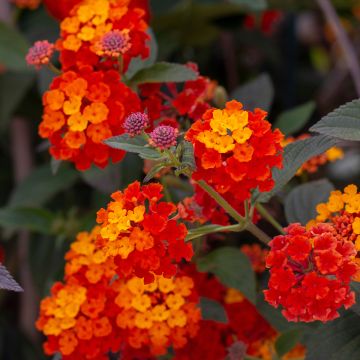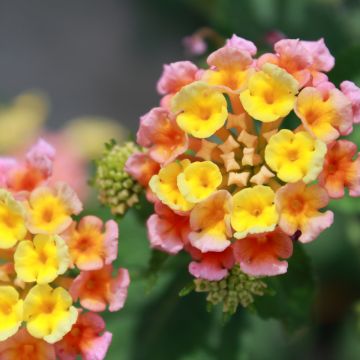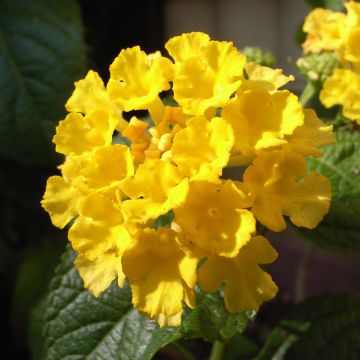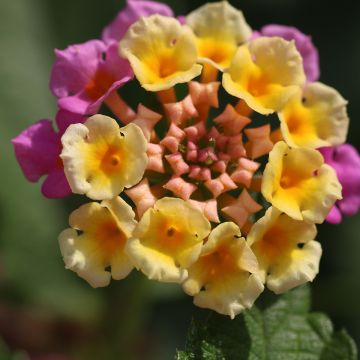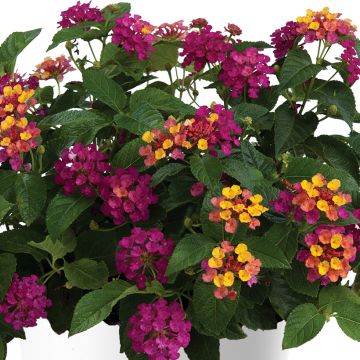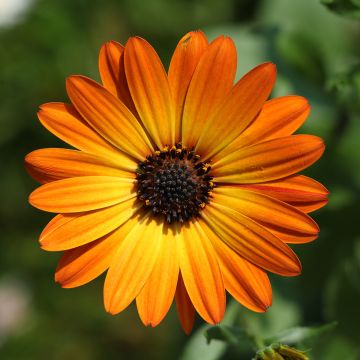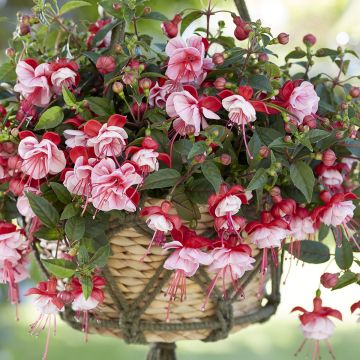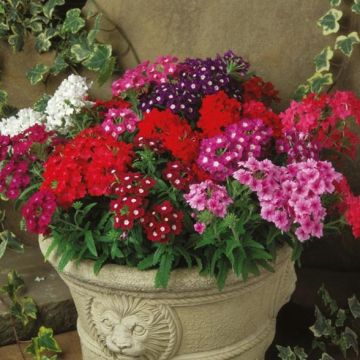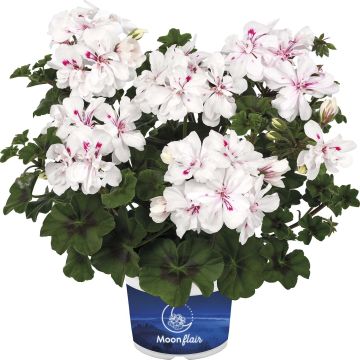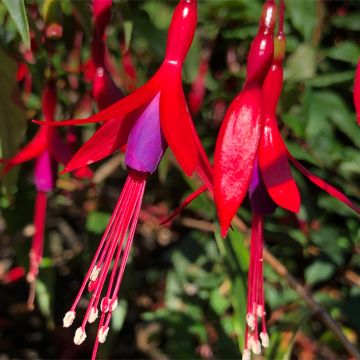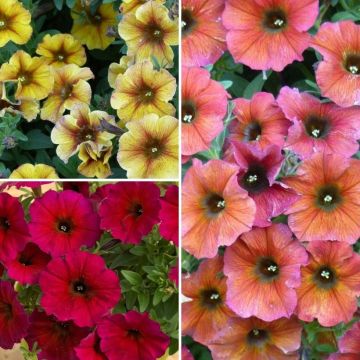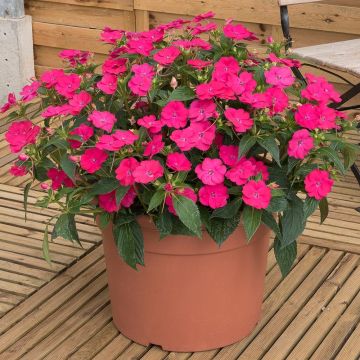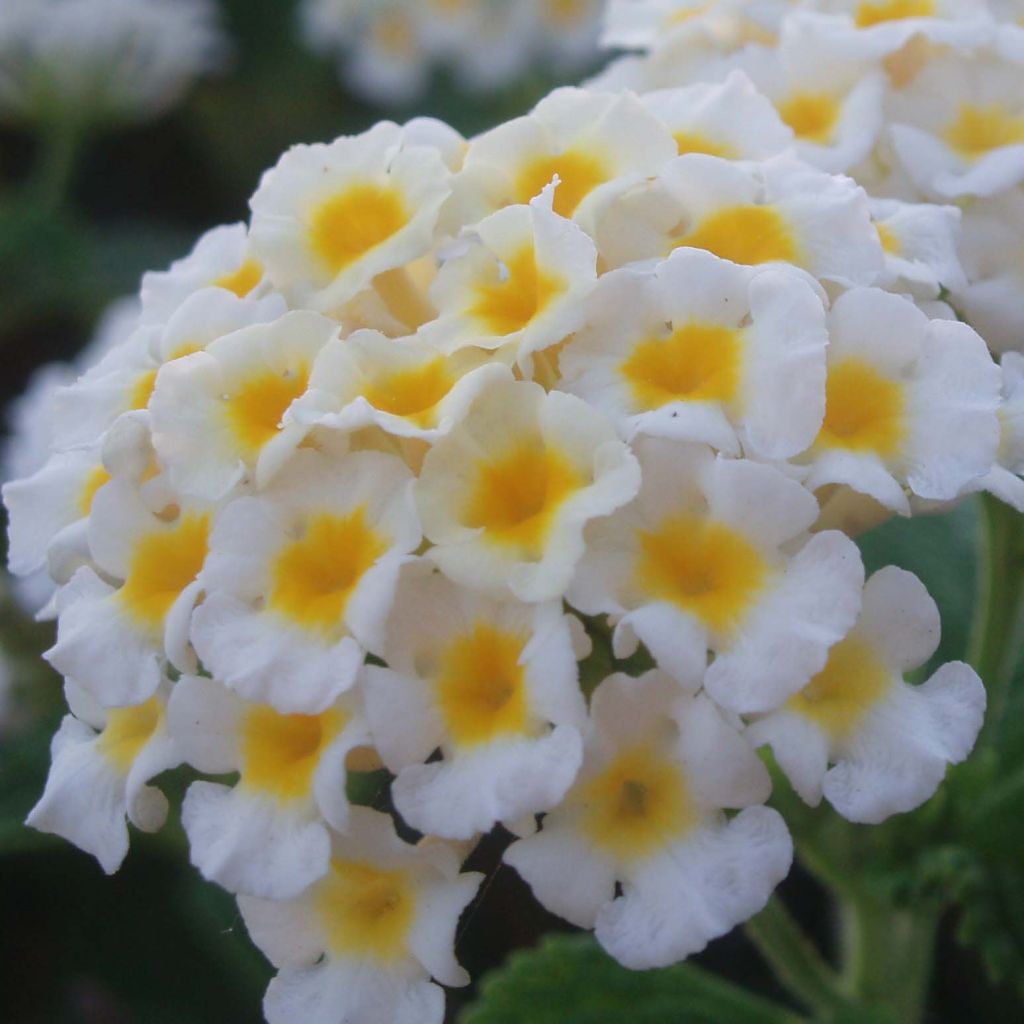

Lantana Camara Simon blanc
Lantana camara Evita White - West Indian Lantana
Lantana camara Evita White
Arrived in good condition, in plug trays, they were immediately transplanted into 9 cm (4in) pots so that they can grow in the greenhouse. After several days, the recovery seems to be perfect, hoping for rapid growth for maximum summer flowering.
Thierry, 28/03/2023
This item cannot be shipped to the selected country
Delivery charge from €5.90
Delivery charge from €5.90
More information
Schedule delivery date,
and select date in basket
This plant carries a 6 months recovery warranty
More information
We guarantee the quality of our plants for a full growing cycle, and will replace at our expense any plant that fails to recover under normal climatic and planting conditions.
From €5.90 for pickup delivery and €6.90 for home delivery
Express home delivery from €8.90.
From €5.90 for pickup delivery and €6.90 for home delivery
Express home delivery from €8.90.

Does this plant fit my garden?
Set up your Plantfit profile →
Description
Lantana camara 'Evita White', with its clusters of small white flowers with yellow centres, is one of the prettiest varieties in the 'Evita' series. Flowering throughout the summer, and with a small growth like all its siblings in this 'Evita' series, this little round bush is particularly suitable for ornamenting terraces and balconies. Its beautiful dark green foliage with prominent veins forms an elegant backdrop for the flowering. A tender plant, Lantana camara is most often grown as an annual outside of regions spared from heavy frosts.
Lantana camara, also known as lantana or common lantana, is a small shrub in the Verbenaceae family, related to verbenas. It originates from a wide area including Mexico, Central America, the Greater Antilles, the Bahamas, Colombia, and Venezuela. It has naturalized in many subtropical regions where it is considered invasive. Not demanding in terms of soil and water, extremely floriferous, this Lantana only has one flaw: its lack of hardiness, down to about -6°C/-7°C (19.4°F) for short periods.
The 'Evita White' cultivar is a horticultural selection chosen for its small growth and brightly coloured flowering. Rapidly growing, this well-branched shrub reaches about 40cm (16in) in all directions in one season. Its quadrangular section branches bear some hooked spines and leaves that are 4 to 6cm (2in) long, tough, rough, and aromatic when crushed, with finely toothed margins. They are dark green, strongly veined, and theoretically persist in winter if there is no frost. Its flowering, particularly long, extends from June-July to October. In the leaf axils, rounded bouquets or panicles of flowers, 4 to 5cm (2in) in diameter, bloom. The small tubular-based flowers gradually change from yellow-golden hearted white to pure white, creating an interesting two-tone effect on the bouquet scale.
Lantana camara 'Evita White' prefers sheltered, warm, and sunny locations, it can survive outdoors in mild climates. Elsewhere, it is an excellent patio plant that should be stored in a cold or temperate greenhouse, protected from heavy frosts during winter. While it can stand out on its own, this Lantana pairs well with the red, blue, or white flowers of salvias, lavenders, garden verbenas, and catmints. It is also a very good plant for a dry garden with no watering, when winters are mild.
Note: Attention, our young plug plants are professional products reserved for experienced gardeners: upon receipt, transplant and store them under cover (conservatory, greenhouse, cold frame...) at a temperature above 14°C (57.2°F) for a few weeks before being placed outdoors once the risk of frost is definitively eliminated.
Report an error about the product description
Flowering
Foliage
Plant habit
Botanical data
Lantana
camara
Evita White
Verbenaceae
Cultivar or hybrid
Other Lantana
Planting and care
Planting period
Intended location
Care
-
, onOrder confirmed
Reply from on Promesse de fleurs
Plug plants - Annuals
Haven't found what you were looking for?
Hardiness is the lowest winter temperature a plant can endure without suffering serious damage or even dying. However, hardiness is affected by location (a sheltered area, such as a patio), protection (winter cover) and soil type (hardiness is improved by well-drained soil).

Photo Sharing Terms & Conditions
In order to encourage gardeners to interact and share their experiences, Promesse de fleurs offers various media enabling content to be uploaded onto its Site - in particular via the ‘Photo sharing’ module.
The User agrees to refrain from:
- Posting any content that is illegal, prejudicial, insulting, racist, inciteful to hatred, revisionist, contrary to public decency, that infringes on privacy or on the privacy rights of third parties, in particular the publicity rights of persons and goods, intellectual property rights, or the right to privacy.
- Submitting content on behalf of a third party;
- Impersonate the identity of a third party and/or publish any personal information about a third party;
In general, the User undertakes to refrain from any unethical behaviour.
All Content (in particular text, comments, files, images, photos, videos, creative works, etc.), which may be subject to property or intellectual property rights, image or other private rights, shall remain the property of the User, subject to the limited rights granted by the terms of the licence granted by Promesse de fleurs as stated below. Users are at liberty to publish or not to publish such Content on the Site, notably via the ‘Photo Sharing’ facility, and accept that this Content shall be made public and freely accessible, notably on the Internet.
Users further acknowledge, undertake to have ,and guarantee that they hold all necessary rights and permissions to publish such material on the Site, in particular with regard to the legislation in force pertaining to any privacy, property, intellectual property, image, or contractual rights, or rights of any other nature. By publishing such Content on the Site, Users acknowledge accepting full liability as publishers of the Content within the meaning of the law, and grant Promesse de fleurs, free of charge, an inclusive, worldwide licence for the said Content for the entire duration of its publication, including all reproduction, representation, up/downloading, displaying, performing, transmission, and storage rights.
Users also grant permission for their name to be linked to the Content and accept that this link may not always be made available.
By engaging in posting material, Users consent to their Content becoming automatically accessible on the Internet, in particular on other sites and/or blogs and/or web pages of the Promesse de fleurs site, including in particular social pages and the Promesse de fleurs catalogue.
Users may secure the removal of entrusted content free of charge by issuing a simple request via our contact form.
The flowering period indicated on our website applies to countries and regions located in USDA zone 8 (France, the United Kingdom, Ireland, the Netherlands, etc.)
It will vary according to where you live:
- In zones 9 to 10 (Italy, Spain, Greece, etc.), flowering will occur about 2 to 4 weeks earlier.
- In zones 6 to 7 (Germany, Poland, Slovenia, and lower mountainous regions), flowering will be delayed by 2 to 3 weeks.
- In zone 5 (Central Europe, Scandinavia), blooming will be delayed by 3 to 5 weeks.
In temperate climates, pruning of spring-flowering shrubs (forsythia, spireas, etc.) should be done just after flowering.
Pruning of summer-flowering shrubs (Indian Lilac, Perovskia, etc.) can be done in winter or spring.
In cold regions as well as with frost-sensitive plants, avoid pruning too early when severe frosts may still occur.
The planting period indicated on our website applies to countries and regions located in USDA zone 8 (France, United Kingdom, Ireland, Netherlands).
It will vary according to where you live:
- In Mediterranean zones (Marseille, Madrid, Milan, etc.), autumn and winter are the best planting periods.
- In continental zones (Strasbourg, Munich, Vienna, etc.), delay planting by 2 to 3 weeks in spring and bring it forward by 2 to 4 weeks in autumn.
- In mountainous regions (the Alps, Pyrenees, Carpathians, etc.), it is best to plant in late spring (May-June) or late summer (August-September).
The harvesting period indicated on our website applies to countries and regions in USDA zone 8 (France, England, Ireland, the Netherlands).
In colder areas (Scandinavia, Poland, Austria...) fruit and vegetable harvests are likely to be delayed by 3-4 weeks.
In warmer areas (Italy, Spain, Greece, etc.), harvesting will probably take place earlier, depending on weather conditions.
The sowing periods indicated on our website apply to countries and regions within USDA Zone 8 (France, UK, Ireland, Netherlands).
In colder areas (Scandinavia, Poland, Austria...), delay any outdoor sowing by 3-4 weeks, or sow under glass.
In warmer climes (Italy, Spain, Greece, etc.), bring outdoor sowing forward by a few weeks.


































